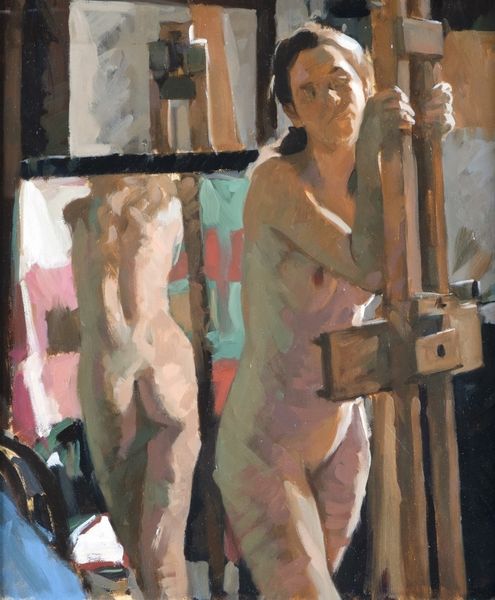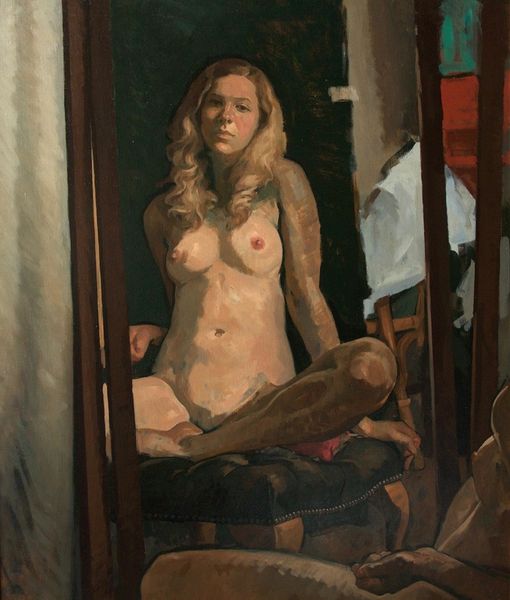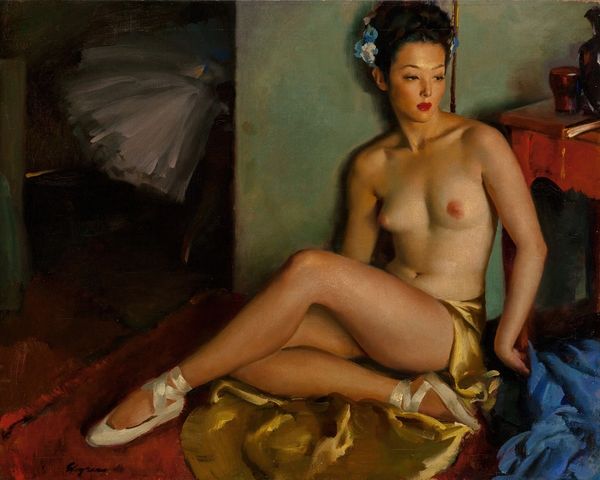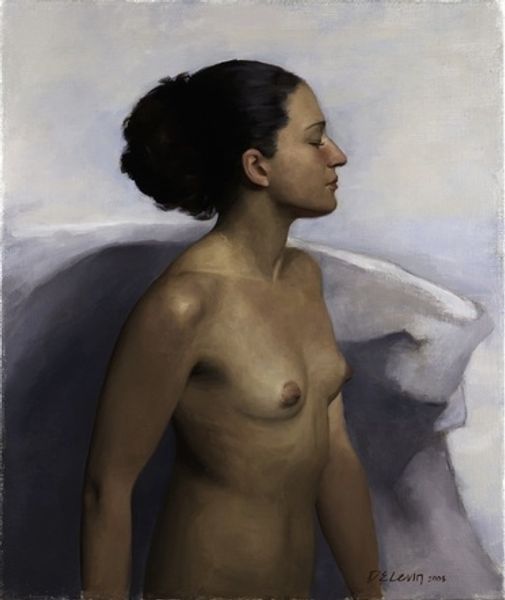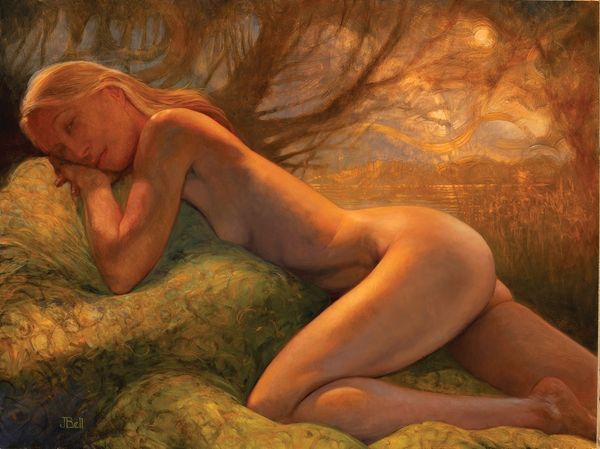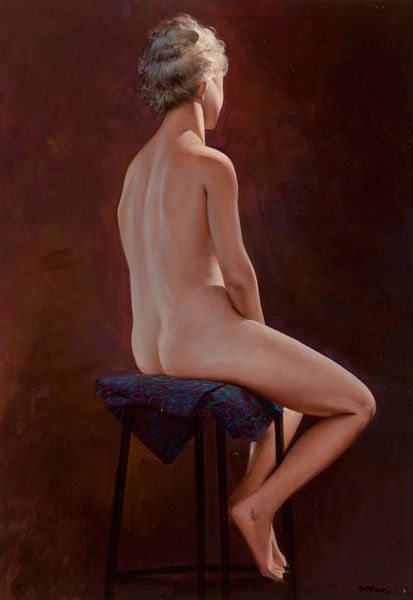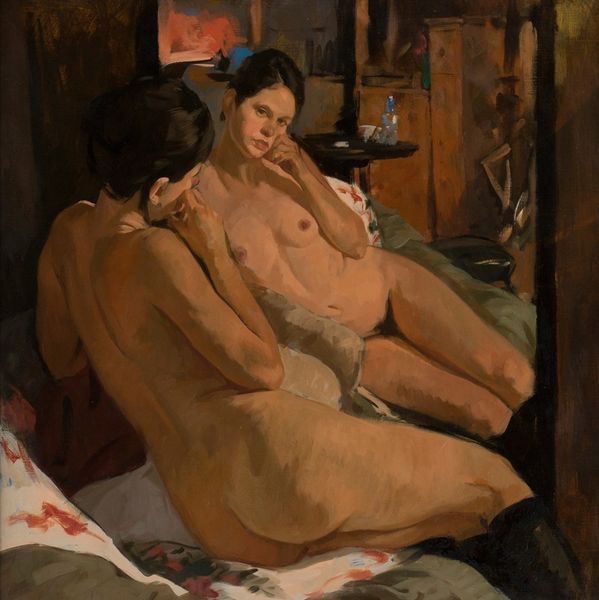
painting, oil-paint
#
portrait
#
figurative
#
painting
#
oil-paint
#
oil painting
#
nude
#
portrait art
#
realism
Copyright: Modern Artists: Artvee
Curator: This is an "Untitled" oil painting, referred to as "no. 21," by Nelson Shanks. It depicts a seated nude figure. What are your initial thoughts? Editor: The somber tones really strike me, almost sepia-like. There's a quiet intensity about her gaze and posture that suggests introspection or perhaps resistance. It feels classically composed. Curator: Indeed. Shanks was known for his realist portraiture. Think about the societal pressures and artistic expectations influencing the creation and reception of nudes. The artist, celebrated for painting prominent political figures, seemingly detaches himself from these representational constraints. Instead he presents a woman seemingly at ease in her private space. How might institutional spaces, like museums, further refine the interpretation of art? Editor: Well, in terms of process, look at the visible brushstrokes and the blending. It creates a very palpable texture, grounding it in the materiality of the oil paint itself. You can really see the artist's hand at work, layering and shaping the figure and surrounding space. The craftsmanship invites close examination. There seems to be an intentional contrast of hard vs. soft rendering. Curator: That layering is key. Oil paint allowed Shanks to build up the forms gradually, almost sculpting with light. Also, in portraiture of that era the female nude could represent everything from beauty to commodity. A common practice would involve making preliminary figure sketches. In these types of realist studies we must consider the means and labor. Editor: And there is something almost unfinished or preparatory about it, less interested in a final product and more interested in process and gesture, like the sitter simply arose from her dressing table and posed there. Curator: Absolutely. The painting subtly addresses not just the representation of the body, but the act of representing itself. It prompts a question about artistic intent and agency. What is presented versus how it's constructed? Editor: By emphasizing process and materials Shanks subtly disrupts traditional interpretations, doesn't he? Curator: Yes. By emphasizing the raw materiality he seems to offer a complex comment about seeing and being seen. What we display and choose to conceal. Editor: I now see the work less as just an individual nude and more as an investigation of paint itself as both medium and material. Curator: The very texture embodies social questions around art as a cultural force. Editor: Exactly. It's less about passive aesthetic experience, more an act of observation and commentary, challenging preconceived norms and assumptions about women’s place. Curator: Thank you for unpacking it with me. It is the layered effect of material process that challenges art historical readings.
Comments
No comments
Be the first to comment and join the conversation on the ultimate creative platform.



